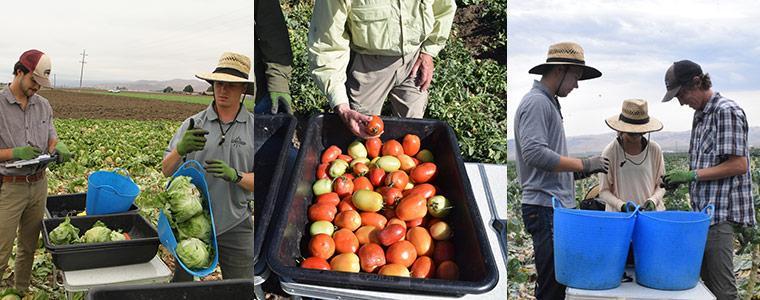Follow CFIE on Social Media

Food Loss at the Farm Level
On-farm food loss in northern and central California: Results of field survey measurements
Read the full paper here
Prevailing estimates of food loss at the farm level are sparse and often reliant upon grower surveys. A more comprehensive review of food loss at the farm level using field surveys is required to gain an adequate understanding of the depth of this issue. This paper details the results of 123 in-field surveys and 18 in-depth interviews of 20 different, hand-harvested field crops performed largely on midsize to large conventional farms in northern and central California. We also provide estimates of the percentage of fields that go unharvested, commonly known as walk-by fields. The results show that food loss is highly variable and largely dependent upon the crop, variety, market price, labor costs, grower practices, buyer specifications, and environmental conditions. On average, we found 11,299 kg/ha of food loss at the farm level, which equates to 31.3% of the marketed yield. When walk-by losses are included, this figure rises to 33.7%. Our paper also demonstrates that grower estimates are typically very unreliable for estimating on-farm food losses. Actual, measured edible food loss exceeded growers’ estimates by a median value of 157%. Strategies to utilize this lost produce could play a significant role in reducing the impact of agriculture on the environment and providing food for the rapidly growing population.
In-Field Food Waste: read more below
Recovery from Supply Chains for Use in Food Donation Programs
The Center for Food Innovation and Entrepreneurship is researching the extent of food losses and waste in northern California, with support from the Bank of America Foundation and the World Wildlife Fund. The focus of this research is to understand the potential for salvaging fresh vegetable and fruit produce that currently does not enter the food chain. Previous studies of food waste have highlighted food waste at the retail and consumer level because the initial concern was to reduce the volumes of waste that were transported to urban land-fill sites. Our research identified key factors leading to farm-level food loss, including buyer specifications and consumer preferences, market prices that are low relative to the cost of harvesting and packing, and environmental factors.
We are currently exploring alternatives that might lead to reduced farm-level food waste. These include:
- Better communication and use of existing tax incentives for donated produce
- Improved coordination between growers and food banks so that more produce might be harvested to improve the diets of people receiving food assistance
- Increased coordination between growers and buyers
- The use of apps to connect growers with laborers who could harvest surplus produce